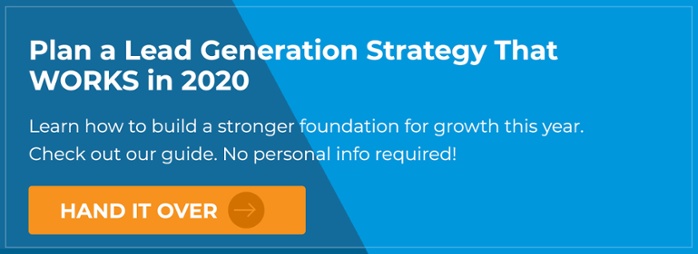
Healthcare Email Marketing Tips for Getting Opens and Clicks
Patrick Dodge
Founder
Email marketing is one of the most over-utilized and yet under-utilized tools in the toolbox used by healthcare companies.
Sure, most business send out emails to their subscriber base, and some of them do a great job. Others send them out infrequently and only when they've got some important company news they want to share.
If you are sending out emails on a regular basis and feeling like your open and click rates are a little soft, it may be time for a little strategic fine tuning.
First, let's establish some benchmarks to measure your email marketing performance with.
What is a Good Open and Click Rate for Email Marketing?
Open rates are analyzed annually by several marketing organizations, and they often report different averages.
The average email open rate across all industries is 18.5%, and the average click rate is 2.6%.
You can safely use these metrics to assess the current performance of your email campaigns, and look for opportunities to make improvements. There are many tactics and things you can experiment with to boost your results – and we will cover many of them here -- but the most important takeaway is an easy one to remember:
The key to building an engaged email marketing list is respect.
According to Campaign Monitor, people send and receive 121 business emails every day, and that number continues to increase. We all know this.
It’s tough to get to "inbox zero" every day, like trying to fight the ocean tide with a dust broom.
If your email marketing strategy is not founded in respect for your audience’s time and needs, it’s a very short trip to the delete button or the unsubscribe link.
So, remember: rule number one is to make sure your messages help people, rather than just try to sell them over and over again.
How does Email Marketing Fuel Your Inbound Strategy?
Many companies associate email with outbound marketing campaigns only, thanks in part to spammy emails we all get on a daily basis.
But email is a critical component of inbound marketing campaigns as well. Not only does it help you to keep your existing customers engaged and informed, it also allows you to nurture new prospects with helpful information.
By sending relevant, personalized content, you can help busy medical professionals evaluate and choose a product or service that solves a specific challenge for them.
If you do it right, and they are a good fit for your company, that journey will end with them opting for a phone call or a chat with one of your salespeople.
Email marketing is a central part of any inbound marketing campaign, and your success will depend on five things:
- Strategic planning - comes from a firm grasp on how your buyers make decisions
- Excellent copywriting - uses a combination of personalization and context to entice people to respond
- A/B testing - determines optimal subject lines and send times.
- Automation – allows you to enroll people into informational “drip” sequences that deliver value
- Analytics - enables you to monitor user behavior, qualify leads, and gather insights that help your salespeople to have a better quality conversation with a new prospects
Marketing automation and analytics are just a few benefits you get from platforms like HubSpot.
When one of your contacts opens an email or clicks a link, you can trigger alerts and functionality that help you deliver a great experience to that user.
Should You Use Email Marketing Lists?
Using emails lists for marketing is a great idea – sometimes.
If you have a substantial database of contacts, it’s best not to “blast” them with the same message. Why is that? Because email blasts fly in the face of everything people want in an email: personalization, context, and value.
If you send a single message to your entire list, chances are good it won’t be relevant or compelling to many people in it, and you will get a high number of people unsubscribing or marking it as spam.

Most importantly, you should never purchase a list of contacts and start marketing to them. Not only is it intrusive and annoying, you may also be breaking the law.
The best people for your marketing message are the ones who know your brand and have given you permission to keep in touch.
How Should You Write Your Emails?

Some marketers will tell you that anything longer than six sentences is too much to send in an email, while others are less concerned with length and more about the message.
Both are important. While I don’t limit the body of our emails to a specific word count, I do keep it to no more than three or four short paragraphs, most often with one or two sentences in each.
Opening an email and seeing large blocks of text is daunting to busy medical professionals, especially now. If you want their attention you need to focus on a few things:
- Clear, compelling subject line – Make sure it is short, interesting, and honestly conveys the value they will get when opening the email. Send them click-bait and you will destroy their trust.
- Opening sentence – Get to the point. Your first sentence should be a stand alone "hook" that makes people want to read more.
- Personalize your writing – Personalizing your content does not mean simply dropping [FIRST NAME] and [COMPANY NAME] tokens in your email. It means you have taken the time and effort to understand your audience's pain, and are sending them relevant, helpful information. This is a great reason why email marketing works best when you segment your contacts into small groups of people with similar attributes. The better you can customize your email content to small segments, the greater the response you will be. Try it!
- Edit, edit, and edit some more – Trim all the fat from your writing. Then, go back and cut some more! Those of us reading it will thank you.
- Include one call-to-action – Every email you send should direct people toward one action. Are you trying to get them to click a link and read your blog? Download a resource? Check out a hot, new product? Knock yourself out, but make sure you include only one call-to-action, unless you are sending a digest-type newsletter with multiple links to various content.
"The key to building an engaged email marketing list is respect."
When Is the Best Time to Send a Marketing Email?
Only consistent testing and measuring will show you the best time for sending marketing emails. This is especially challenging if you are targeting nurses or doctors who work crazy hours.
Is four o’clock in the afternoon the best time to reach them, or four in the morning? If you know your audience's schedule, you can experiment and find out!
If your target list is made up of 9-5pm professionals, I would advise against sending anything between 7-10am. I don’t know about you, but my inbox is under assault during those hours.
Our clients’ customers are naturopathic physicians and chiropractors, and we’ve gotten the greatest response from emailing them between 3-4pm.
The key is to find a moment of downtime in their schedule where they are catching up on correspondence, and not trying to juggle three other tasks at the same time.
Sometimes we even send emails in the early evenings on Sunday, when people are starting to think about the week ahead, thumbing through their emails and watching Netflix.
A lot of companies out there question whether email marketing is still an effective tool for customer acquisition. I can tell you firsthand it's an indispensable tool.
When used in concert with all other aspects of your inbound marketing campaign -- blogging, video production, social media, paid content distribution -- email marketing will help you qualify and nurture leads like nothing else can.
If you keep your strategy grounded in absolute respect for the people you are emailing, you will have a much better shot at earning and keeping their attention. You can be sure about that.
Nov 25, 2020 6:05:20 PM

